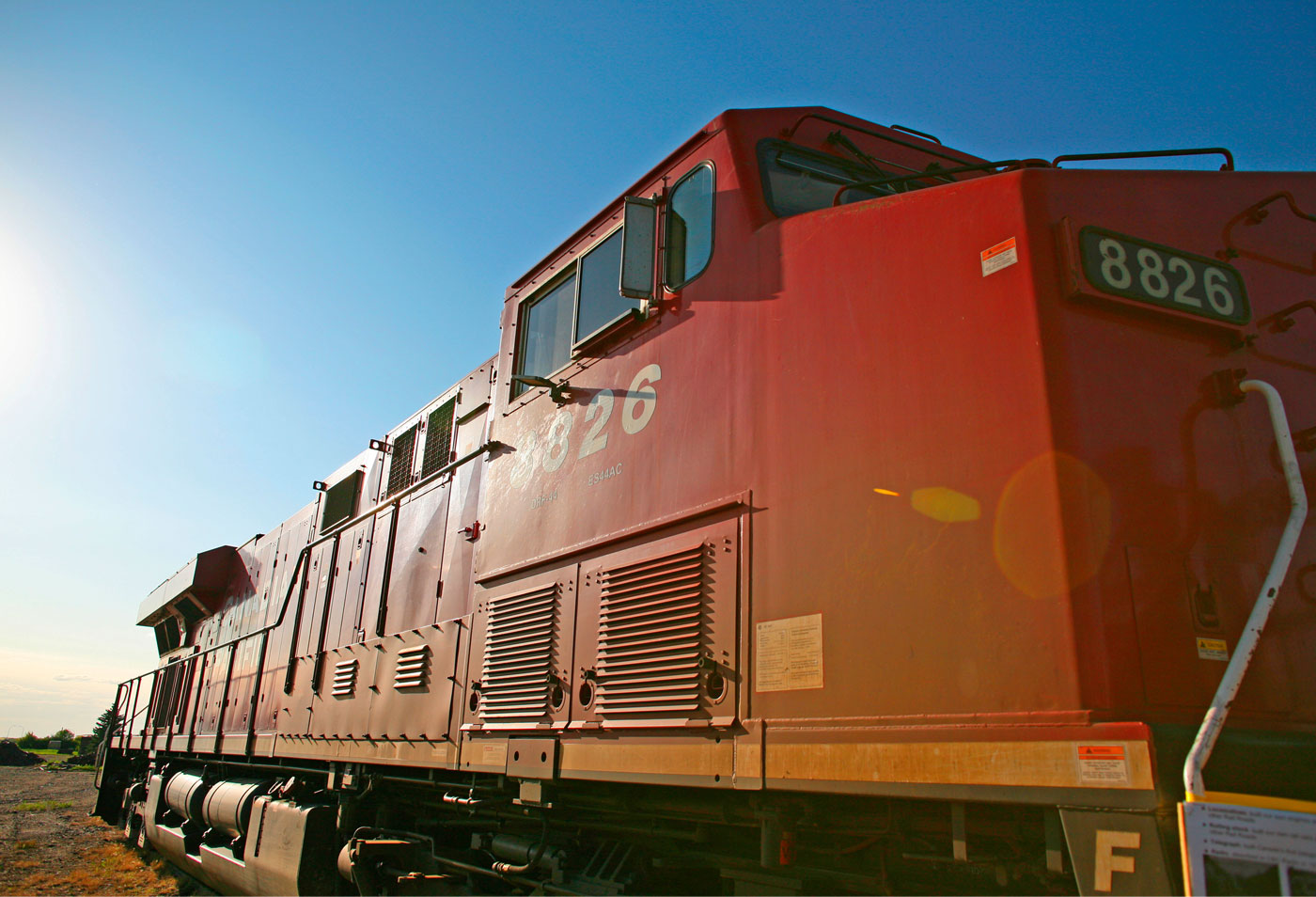

The Town of Wilkie is situated 150 Kilometers West of Saskatoon and 58 Kilometers South of The Battleford's on Highway 29 and along the CPR Rail line. Wilkie is a community of approximately 1300 people.
Settlers began arriving in Wilkie in the Fall of 1905.
Wilkie became incorporated as a town in 1910 and was named after Daniel Robert Wilkie who was the President of the Imperial Bank. The names of Streets and Avenues in the town were in one way or another connected with either the Imperial Bank or D.R. Wilkie.
BRIGHT, CLEAR SKY OVER A PRAIRIE, so wide only the heavens could frame it. A sky alive each moring with the fire of the rising sun; a sky ending each day with the promise of a better tomorrow. Such was the summer that greeted those first daring souls trekking the Tramping Lake portion of the Medicine Hat Trail.
ONE OF THOSE SOULS stopped to plant his roots in the area known as Goose Lake Counrty. Grasping the need for a stopping place for other weary travellers, C.J. Logan established a general store. The year was 1906.
WITH THE NEEDS OF the homesteaders to be met and the distant rumbling of the approaching railroad, the village that would be nicknamed "The Town That Won't Wait", jumped to life. The name Adanac was breifly considered for the young metropolis, but the surname of the early president of the Imperial Bank of Canada, Daniel Robert Wilkie , was chosen instead. In advance of the approaching steel, Wilkie boasted a population of 300 while 30 businesses formed the foundation of the community.
STEEL ARRIVED on September 16th, 1908. Wilkie had a direct artery to the outside world. Passenger service began for the people - freight service began for the grain.
GREAT THINGS HAPPENED in only three years. Lumber arrived for the first grain elevator, the Wilkie Press started publication, a school opened with sixteen pupils attending. St. Pauls Anglican Church was visited by the Bishop, and Ernest Laycock arrived to open the first law practice. Law and order was maintained by the patrol of Royal North West Mounted Police.
ON JANUARY 6th, 1911 the Town of Wilkie was incorporated with E.H Dulmage as Mayor. Residents organized a literary society, formed an agricultural society, began bowling, tennis
golf and roller skating as past times, formed a fire brigade, viewed movies and presented an ice carnival. A cemetery site was secured, the English Grant Opera Company enterained
and several district ladies organized a Ladies Rifle Club. Wilkie proudly possessed a new Fire Hall, a telephone system with 46 subscribers and the Wilkie Town Band. The first private hospital was opened under the expert eye of Dr. R.A. McLurg. Bob Smith provided an auto garage and the town's earliest automobile drivers were properly censored for scaring horses and pedestrians.
BY 1912, the town boasted a population of 1,500. A power plant started operation and high-flowing well produced 60,000 gallons per day . . . both promising luxury for homemakers.
That winter the first curling rink was ready and a club formed.
THE PROSPERITY OF THE YEAR was measured by two sources; 600 men were employed on the CPR, construction crews with a payroll of $2,000 per day; 300 grain cars carried away the bounty of neighbouring farms. Nicknamed "The Pivot of the Canadian West" by Canadian Pacific Railway, Wilkie also became the hub and terminal of four branch lines.
ON AUGUST 18TH, 1913, a new eight room school opened to accomodate district children. The stately structure dominated the horizon.
A SKATING RINK AND CURLING RINK complex opened on New Year's Day, 1914. By August, Wilkie was sending young men to fight in "The War to End All Wars". The call to arms was answered again in 1939. A cenotaph in Memorial Park and the Wilkie Branch of the Royal Canadian Legion keep alive the memory of those who gave their lives.
WILKIE, like countless other prairie towns, faced the challenge of the Twentieth Century and weathered the economic surges of growth and anguish. The dust cloud of the Thirties blew hardship for the district but hardship makes a comminuty stronger.
TODAY, RICH AGRICULTURAL ROOTS have spread to replace the railroad as the chief employer. The Sasktachewan Transportation company provides a bus service in lieu of the passenger trains that ceased to run in 1960.
YOUNG PEOPLE from the town and former rural school districts proudly attend three modern comprhensive schools: Norman Carter Public School bears the name of a pioneer homesteader and newspaper editor. McLurg High School keeps alive the memory of Dr. McLurg, and St. George Seperate School fulfils the religious educational needs of the Roman Catholic population.
MEDICAL REQUIREMENTS are provided by the Wilkie Health Centre. The Poplar Courts Senoir Citizen home opened in 1982.
AS WELL AS FURNISHING a secure, healthy environment for residents, Wilkie picturesqely presents tree-lined streets and boulevards for visitors. A completely modern community centre and swimming pool, a museum, golf course, regional recreation park and library also add to the quality of life. Volunteer groups and services clubs supply many extra services.
WILKIE . . . . a fertile yielding wealth and contentment for generations. A pioneer dream that keeps on growing.
